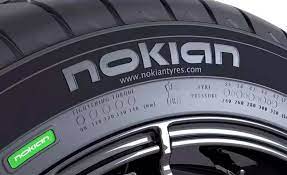 When I’m on a roll – and it’s not often, thanks to PCMS (Post Covid Malaise Syndrome), everything I see and read in the news is viewed through a strategic lens. It’s, as the kids would say, strategy fire. Today, for instance, it started with a glance about a NYT piece on the speed with which Nokian Tyre’s changed manufacturing strategy. With climate change, geopolitical results-driven planning and change. And they realize quick change is better than sluggish change. The new environment is the catalyst of this change, but strategy the driver.
When I’m on a roll – and it’s not often, thanks to PCMS (Post Covid Malaise Syndrome), everything I see and read in the news is viewed through a strategic lens. It’s, as the kids would say, strategy fire. Today, for instance, it started with a glance about a NYT piece on the speed with which Nokian Tyre’s changed manufacturing strategy. With climate change, geopolitical results-driven planning and change. And they realize quick change is better than sluggish change. The new environment is the catalyst of this change, but strategy the driver.
Notice I didn’t use the word brand one time in that paragraph.
The brandscape was kind enough to teach me my craft yet the word “brand” diminishes what I do for a living. When I position around brand, it sounds cool, trendy and au courant, but it’s not a wining communications value. No one wakes up in the morning thinks brand strategy is the business answer.
When I think about it I am really a strategist. I find business-winning values, actions, tasks (read: strategies) that add money to the top line and bottom line. My work doesn’t feed the ad agency. It feeds the business and everyone in it. Which then feeds the consumer.
When Nokia Tyre decided to open a manufacturing plant in Hungary because of the war in Ukraine, they weren’t, per se, using a strategic road map or what I like to call “an organizing principle for product, experience and messaging.” They were looking purely at supply chain, cost of business, security, ROI timetable and investment strategy. They were blocking and tackling. Had they an organizing principle of values to drive all decisions, before they met to solve the many layered challenges, their “time-to-solve” would have been faster and more organized. And, honestly, it was quite fast to begin with.
Strategy would have sped up the process.
For examples of how my strategy based upon proof has worked for other companies, write Steve at WhatsTheIdea.
Peace.


